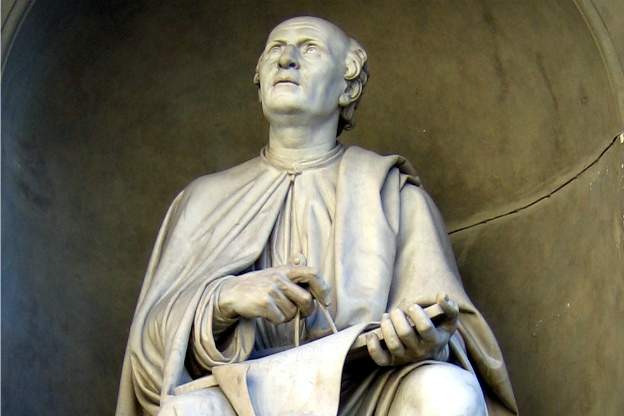
In February of 1377, Robert, Cardinal of Geneva (later to be known as antipope Clement VII) ordered the massacre of as many as 5,000 civilians in the Italian commune of Cesena. The “Cesena Bloodbath” as the massacre came to be called, earned Robert the Nefarious the nickname “Butcher of Cesena.” The killings comprised one extreme episode in the War of the Eight Saints, a conflict between Pope Gregory XI, last of the Avignon popes, and a Florentine-led Italian coalition.
The War of the Eight Saints began in 1375 when negotiations for a return of the papacy from Avignon to Rome sparked controversy over territorial holds. Following years of conflict, order was finally reestablished in 1378 with a treaty negotiated in Tivoli. The papacy was then resumed in Rome and taken up by Pope Urban VI.
In May 1377, Oswald von Wolkenstein was born. As the second son in his family, Wolkenstein lacked an inheritance but was allowed to travel and pursue a political vocation. Throughout life, he labored as both poet and statesman. His journeys throughout Europe fueled his creative expression through songs that spoke of adventure, religious sentiment, and courtly love. Today, approximately 57 of Wolkenstein's monophonic melodies, and 37 of his polyphonic settings, are preserved. In addition to a vast body of poetry, Wolkenstein's songs provide autobiographical information, helping to outline events from his life.
In 1377 Florence, Filippo Brunelleschi was born. After studying mathematics, literature, and metalworking, Brunelleschi undertook commissions for architectural and artistic projects throughout Florence. His most famous undertaking, the dome of the Cathedral of Florence, occupied him for over fifteen years. During that time, it is believed that he placated workers by transporting food and diluted wine up to them. In addition to his architectural work, Brunelleschi’s illustrations are known for demonstrating linear perspective and designs for mechanical devices used in churches and theaters.
The year 1377 also saw the death of Guillaume de Machaut, arguably the most influential composer of the 14th century. To commemorate Machaut's death, French poet Eustache Deschamps composed a double-ballade calling all to mourn. François Andrieu's polyphonic setting of the ballade is preserved in the Codex Chantilly.









